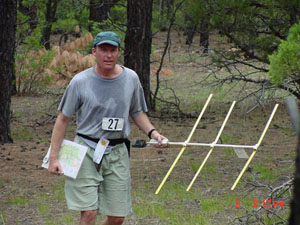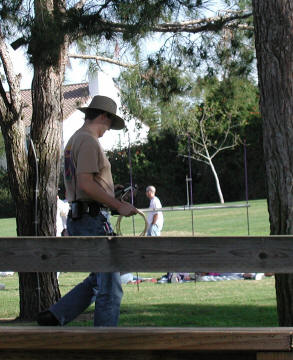NEXT TRANSMITTER TBD WHEN: Generally first (preferred) or second Saturday of the month. Join mailing list for updates. STARTS: 11:00 am FOX FREQ: 146.565 MHz (sometimes may have a secondary transmitter OR walking T-Hunts) COORDINATION: 447.180- (Primary) 147.645- PL 110.9 (Secondary) MAILING LIST: thunters-join@soara.org
To Join the Mailing list, visit the subscription page here: https://soara.org/mailman/listinfo/thunters
 T-Hunting is a popular activity among Amateur Radio operators, also known as; transmitter hunting, fox hunting, radio direction finding. A SOARA T-hunt starts with a transmitter on the 2-meter band that is hidden somewhere in South Orange County and is “hunted” or located using radio direction finding techniques. The transmitter is usually on the air intermittently and automatically identifies itself either in Morse code. Amateurs participating in the SOARA T-hunts can expect low pressure, fun events and we encourage all new Hams to participate. This is a good time to ask other Hams for help but they may not tell you ALL their secrets!
T-Hunting is a popular activity among Amateur Radio operators, also known as; transmitter hunting, fox hunting, radio direction finding. A SOARA T-hunt starts with a transmitter on the 2-meter band that is hidden somewhere in South Orange County and is “hunted” or located using radio direction finding techniques. The transmitter is usually on the air intermittently and automatically identifies itself either in Morse code. Amateurs participating in the SOARA T-hunts can expect low pressure, fun events and we encourage all new Hams to participate. This is a good time to ask other Hams for help but they may not tell you ALL their secrets!
The T-hunts start at 1100 hrs (11 am) typically on the first Saturday (previously was first Sunday, but we decided we like to relax with family on Sundays) of the month and usually last 1 to 3 hours. This is a good time to ride with a friend. Snoop around and you should be able to find an experienced SOARA T-hunter to ride with. To receive T-Hunt specific announcements, join the SOARA T-Hunt mailing list.
 When the transmitter is on the air, the hunters “take bearings” using directional antennas by determining the direction where the signal appears to be the strongest. This is done throughout the hunt until the transmitter is found. Usually, driving to the immediate area of the hidden transmitter is part of the game. Once there, the remainder of the hunt usually takes place “on foot” as you “sniff” out the final hiding location of the hidden-T.
When the transmitter is on the air, the hunters “take bearings” using directional antennas by determining the direction where the signal appears to be the strongest. This is done throughout the hunt until the transmitter is found. Usually, driving to the immediate area of the hidden transmitter is part of the game. Once there, the remainder of the hunt usually takes place “on foot” as you “sniff” out the final hiding location of the hidden-T.
The transmitter transmits on the nationally accepted T-hunt frequency of 146.565 MHz and hunt coordination is on the SOARA 440 MHz repeater (447.180-). The transmitter may be hidden anywhere that is safe and is publicly accessible in Orange County that is south of the I-55 freeway. The hunters may start anywhere they choose.
To put a rumor to rest, you do not need expensive equipment for transmitter hunting! All you need is a 2-meter receiver (a handheld will do), an attenuator and a directional antenna (yagi, quad, etc.). The “tape measure” antenna is a good choice. Other items that can help, but aren’t necessary, are a map of Orange County, a compass, a protractor and refreshments! Most of the equipment just mentioned can be built for a rather cheap price, and it performs exceptionally.
T-hunting is both a fun and a serious activity. The “winner” of a the SOARA T-hunt is the person who finds the hidden transmitter first. The winner is then the person who will hide the transmitter on the next hunt. T-hunters also use their skills to locate downed airplanes, boaters in distress, and sources of radio interference, unlicensed operators and jammers. T-hunters use competitions like these to test their equipment and practice their skills in preparation for more serious situations. Homingin.com is a great source of information and you will find information on building your own tape measure Yagi antenna for receiving.
